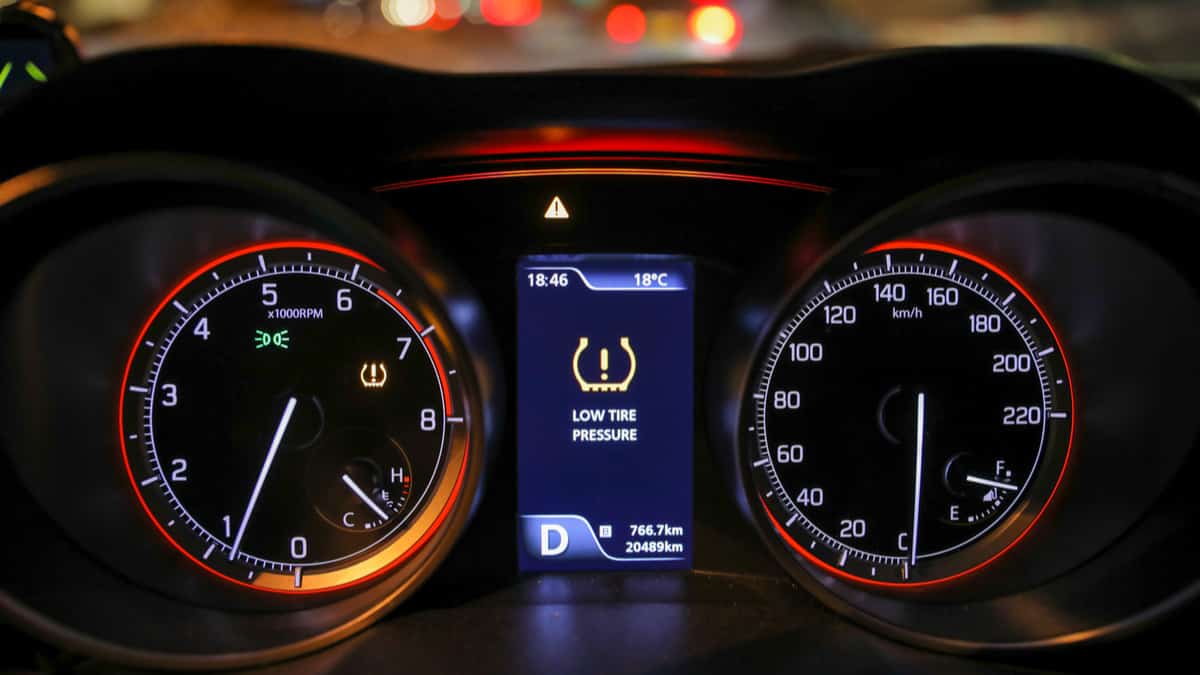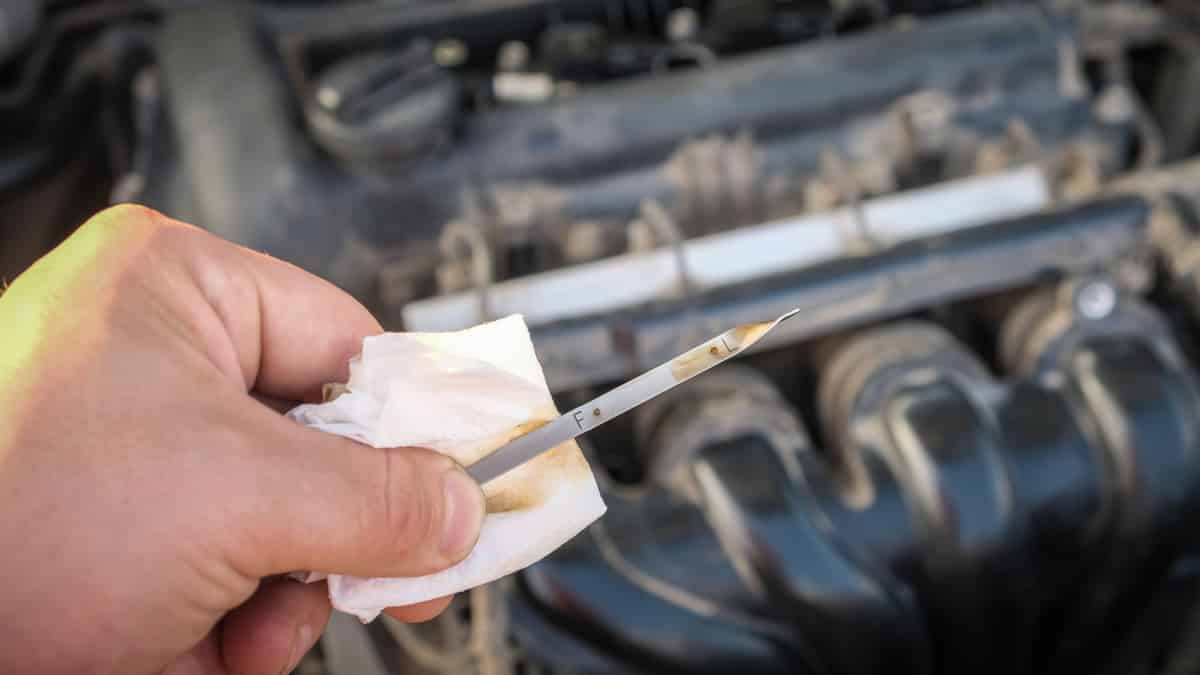TPMS stands for “Tire Pressure Monitoring System,” and it appears on your dashboard with a warning light whenever your car tires are irregularly inflated.
The TPMS light could indicate that your TPMS is not properly recalibrated or that your tire pressure is too low.
However, a lot of drivers complain that the TPMS warning light keeps blinking even after they inflated their tires to the proper tire pressure.
In this article, you will learn how to reset the TPMS light in several vehicles on the market.
Direct and Indirect TPMS
Before we move on to reset the TPMS system, it is important to understand your car’s type of monitoring system. There are 2 main types of TPMS: Direct and Indirect.
The direct TPMS has sensors located on the tire’s pressure valve or the rim. These sensors collect information and send it to the car’s onboard computer. However, the direct TPMS will most likely malfunction due to bad weather conditions. It is usually found in cars in the United States.
The indirect TPMS has sensors placed on the car’s ABS brakes and/or the speed sensors on each wheel. These sensors measure the wheel rotation speed and identify changes as underinflated tires rotate much faster compared to regularly filled tires. This system is most often found in cars in Europe.
How to Reset a Tire Pressure Light (TPMS)
Make Sure You Have the Correct Pressure
Use the Car’s TPMS Reset Button
Drive at 50 mph
Remove and Re-Connect the Car Battery
Open your car’s hood and look for the battery’s negative terminal. Remove the negative terminal to disconnect the battery, then press the vehicle’s horn to drain out any remaining power. Reconnect the positive terminal, and the TPMS warning light should go away.
Use a TPMS Reset Tool for Your Vehicle
Damaged Sensors
If the above-mentioned techniques do not work, it may mean that the sensors may have been damaged and will have to be replaced. The sensors can get damaged due to various reasons; for example, tire replacement, brake repairing, oil change, filter change, or even during normal tire service.
The sensors do also have batteries inside of them, which will drail out after a couple of years.
You can also try out these specific methods depending on your car make and model.
Where is the TPMS Reset Button Located?
The TPMS reset button is often located under the steering wheel or integrated with the car’s information display system. This heavily differs depending on which car model you have though.
Down below, you will find some more vehicle-specific information about where the button is located.
TPMS Reset Honda Vehicles Introduced After 2016
If you own a 2016 or later Honda car with a touchscreen display, follow these steps to easily re-calibrate the TPMS.
- Go to the home screen
- Select settings
- Click TPMS calibration
- Select “Calibrate”
For models without a touch display, use buttons on the steering wheel to select ‘TPMS Calibration’ and chose the ‘Calibrate’ option.
TPMS Reset Honda Vehicles
For old Honda models without touch display, use steering wheel buttons and calibrate through these steps:
- Select Menu
- Select ‘Customize Setting’
- Choose TPMS Calibration
- Click Initialize
For models without any display screen, a TPMS reset button can be found on the steering wheel’s left. Press the button for a couple of seconds, then release it to re-calibrate the system.
TPMS Reset Chevrolet Models
Resetting TPMS on Chevrolet models can be performed at home as well, but it requires a J-46079 Tire Pressure Monitor Tester, which can be bought from eBay.
- Put the key in the ignition and turn to the “ON” position, but don’t start the vehicle.
- Using the driver instrument cluster, click the “Vehicle Information” button and navigate to “Relearn Tire Position”.
- Click “Set/Reset” and a message saying “Tire Learning Active” will pop up.
- If you own an old model without an instrument cluster, press the odometer reset button until “Tire Learning Active” message is displayed.
- Connect the J-46079 Tire Pressure Monitor Tester to the left front tire and press the active button. Wait for 10 seconds until a horn chirp sound is heard. Repeat the process for the remaining tires.
- Once all tires are done, turn the key to the “OFF” position.
- Re-inflate the tires according to the recommended PSI.
TPMS Reset Volkswagen Models
Resetting TPMS on a Volkswagen differs from model to model. The reset button can be found inside the glove box or near the gear shift for old models. Once the button is found, press it for a couple of seconds until a beep is heard, then release.
For newer models, the TPMS can be re-calibrated easily through the infotainment system.
TPMS Reset Mini Models
The TPMS on Mini models can be re-calibrated easily through the button as well. For old models (2002 to 2006), the reset button can be found in the emergency brake handle’s front cabin.
Turn on the ignition – but don’t start the car – and press the reset button until the yellow indicator on the dashboard starts blinking. The TPS will be automatically calibrated on your next drive.
On the newer models (2007 and onwards), start the car and navigate to “Set/Info” on the instrument cluster. Scroll down until the tire monitor symbol is displayed, click on reset, and re-calibrate the TPMS system.
TPMS Reset Toyota Models
Toyota cars normally have a reset button under the steering wheel. The reset button can be hard to find, and you can find it in the lowest area in front of your pedals. Just press the reset button for 5 seconds while the ignition is on, and the TPMS should be reset.
- Turn the ignition ON
- Press the reset button for 5 seconds
- Turn off the ignition
- Start your car and check if the light is gone
Post-Reset Tips
Once the TPMS system resets and the warning light goes away, you can follow a few maintenance tips to avoid the problem in the future.
- If you replace the valve-system core, choose a stainless steel core instead of a brass core.
- Never leave the tire without a cap screwed to the valve stem.
- Do not use aerosol flat fixer as it damages the sensor capability to measure changes.
- Take your car to an authorized dealership to have your vehicle and tires inspected.
Can I Remove the TPMS Function instead?
It is possible, but you should remember that getting rid of the TPMS is not the right solution. According to the law proposed by “The National Highway Traffic Safety Administration (NHTSA),” all cars newer than 2008 are required to be equipped with a TPMS. This law was introduced to minimize the number of road accidents due to overinflated or underinflated tires.
When should I reset my TPMS?
The TPMS, or tire pressure monitoring system, should be reset when you change your tires. This is because most TPMS systems calculate your current tire pressure based on the size and weight of your original tires. When you switch to a different set of tires, the TPMS will not give an accurate reading.
Do you have to reprogram TPMS sensors when changing tires?
It depends on the car model. In some cars, you need to reprogram TPMS sensors when changing tires because the pressure information the sensors transmit will be incorrect if they are not calibrated to the new tires. In other car models, simply resetting the TPMS with the reset button may be sufficient.
Do TPMS sensors reset themselves?
Some TPMS sensors do reset themselves, but many do not. It depends on the make and model of the sensor. Some sensors have a “learn mode” that needs to be activated before the sensor will start transmitting data again. Others will continue to transmit data even if they are not reset. If you’re not sure how to reset your TPMS sensor, consult the owner’s manual or contact the manufacturer for assistance.
Can I drive with the TPMS light on?
While you can drive with a TPMS light on, it is not recommended as you will lose the ability to monitor tire pressure without doing so manually. It’s important to take care of this as soon as possible, as driving with an underinflated tire can lead to decreased fuel economy and increased wear and tear. If the TPMS light comes on while you’re driving, pull over at the next safe opportunity and check your tires’ air pressure levels. You can typically find the recommended levels in your car’s owner’s manual.
To reset a TPMS system, you must either press the TPMS reset button or use a TPMS reset tool after inflating the tires and making sure the tire pressure is correct. In some car models, the TPMS system will reset itself after you inflate the tires and drive for a while above 50 mph.
If your TPMS system has been reset according to the correct procedure for your car model and the TPMS light is still on, you may still have a problem with incorrect tire pressure in one or more of your tires.
Try checking the air pressure in each tire with another more accurate gauge (don’t trust gas station gauges) and inflate them up to the recommended PSI rating. If the light comes back on after driving for a while, there may be a faulty TPMS sensor in one of the tires.
Sources
Federal Motor Vehicle Safety Standards; Tire Pressure Monitoring Systems
Learn more:
- 8 Best TPMS Reset Tools
- Tire Pressure Sensor Fault (What It Means & How to Fix It)
- What Tire Pressure is Considered Too Low?
Categories: Guides, Tires, Warning Lights
















